A story of love, longing and jazz in 1960s Bombay
Their eyes give it away. Chris Perry wears a slick black jacket, the sleeves of his crisp white shirt revealing the glint of dark cuff links. His fingers clasp a gleaming tenor saxophone with a lover’s gentleness. Arms crossed coquettishly above her waist, Lorna Cordeiro is chic in a bouffant and a form-fitting gown that shows a flash of ankle. They stare into each other’s eyes, mesmerised. Behind them looms a giant camera aperture borrowed from the opening sequence of the Bond films.
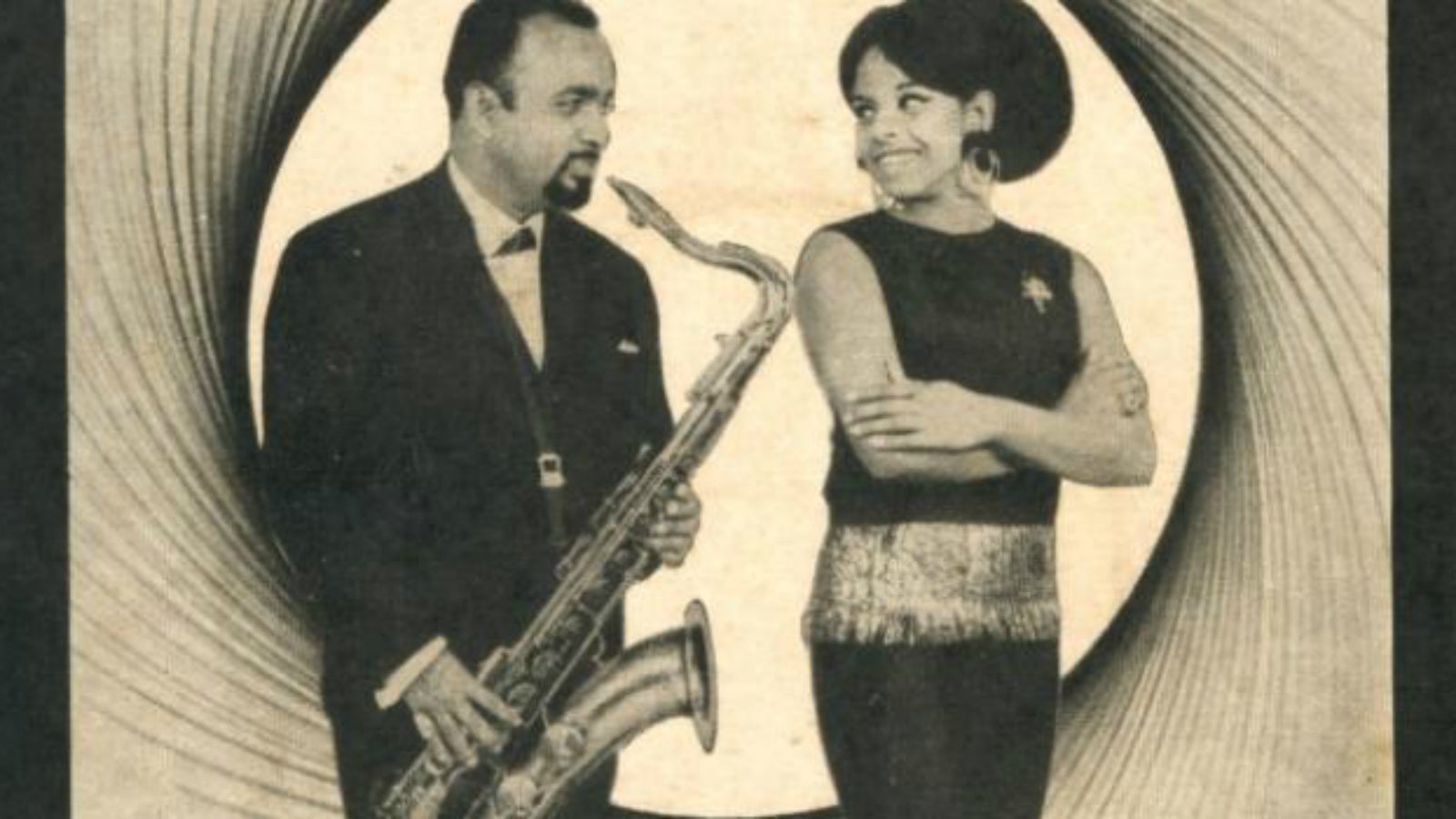

Their eyes give it away. Chris Perry wears a slick black jacket, the sleeves of his crisp white shirt revealing the glint of dark cuff links. His fingers clasp a gleaming tenor saxophone with a lover’s gentleness. Arms crossed coquettishly above her waist, Lorna Cordeiro is chic in a bouffant and a form-fitting gown that shows a flash of ankle. They stare into each other’s eyes, mesmerised. Behind them looms a giant camera aperture borrowed from the opening sequence of the Bond films.
You couldn’t miss the poster as you sauntered down Jamshetji Tata Road in downtown Bombay. It hung outside the Astoria Hotel, across the street from the octagonal Art Deco turret of Eros cinema, inviting the city to Chris and Lorna’s daily shows at the Venice nightclub. It was 1971. India was savouring its newfound place on the world’s stage. The country’s armed forces had decisively liberated Bangladesh and the idealism of Independence had welled up again. India’s middle classes were capturing their polyester memories on Agfa Click IIIs that cost 46.50 rupees (taxes extra), aspiring to the lifestyles of “The Jet Set Air Hostesses” described in The Illustrated Weekly of India (price: 85 paise), and being encouraged by newspaper ads to “Go gay with Gaylord fine filter cigarettes”.
As the City of Gold bubbled through its jazz age, Lorna and Chris enthralled Bombay with their shows at Venice each night. Remo Fernandes, who would go on to become the first Indian pop musician to record an album of original English-language tunes, was among those locked in the spell. “Two artists sometimes ignite a creative chemistry in each other which goes beyond all logical explanation. Mere mortals can only look and listen in awe,” he rhapsodised. “In such duos, one plus one does not make two. It makes a number so immeasurable, it defies all laws of calculus.”
But the sparks that flew at Venice gradually built into a roaring conflagration. As Remo put it: “Hyper-intense, high-temperament artistic relationships often end in emotional disaster, like two comets when they steer too dangerously close. Chris’s and Lorna’s, as we all know, was no exception.”
Like the myths about the city in which they soared to fame, the tale of Chris and Lorna has gained so much in the re-telling it’s sometimes difficult to thresh the apocrypha from the actual. Thirty years after the two stopped performing together, old-time musicians in the bylanes of Dhobi Talao and Bandra still beg anonymity as they reminisce in sad whispers.
“He was shameless. He left his wife and three small children for that girl.”
“Chris and Lorna were in love. When they fought, they became mortal enemies. He destroyed her and he destroyed himself.”
“She was very good singer. Beyond that, she was nothing. She got her break with Chris Perry. He made contract with her. She couldn’t sing without his permission. She had no brains, so she signed. Then he went back to his wife.”
“He didn’t let her perform with anyone else. He threatened to break the legs of one Hindu fellow who tried to get her to sing with him.”
“She hit the bottle, men. She became an alcoholic and just disappeared.”
Chris Perry, who was born Pereira, died on January 25, 2002, his last years hobbled by Parkinson’s disease. Lorna has refused to recount her version of events for publication. But the fidelity of her contralto booming out of our speakers, embroidered with Chris’s perfectly crafted sax filigrees, speaks its own truth.
[protected-iframe id=”0dbf553a5c6da49fef7f0fb488436eab-39587363-66199670″ info=”https://w.soundcloud.com/player/?visual=true&url=http%3A%2F%2Fapi.soundcloud.com%2Ftracks%2F18272368&show_artwork=true&secret_token=s-9H3Vq” width=”100%” height=”100″ scrolling=”no”]
* * *

Ronnie Monserrate was 19 when he began to play Sunday gigs at Venice with the Chris Perry band, sitting in for the regular pianist. Venice had a reputation. It was the jazzman’s jazz haunt, the rendezvous for musicians from around the country and occasionally from around the world. Dave Brubeck swung by when he visited Bombay in 1958, as Duke Ellington had when his band set out on their famous world tour of 1963. As Ronnie tells it, the dapper Chris Perry was the musician’s musician: “He had perfect pitch. He was an arranger, a composer, a player.” Chris played both trumpet and saxophone, sometimes switching from one to the other mid-tune, a feat that required elaborate lip control. His trumpet tone was broad and true. He didn’t have flashy technique, but the notes he coaxed out of his horn had a mellowness that kept the fans coming back night after night.
Chris was 43 at the time, Lorna was 25. No one seems quite sure exactly how they met, but everyone’s agreed that he groomed her into one of the Bombay’s finest crooners. One version maintains that Lorna got her break when still in school, after she won the Connie Francis soundalike competition at Metro cinema. This prompted a musician named Raymond Albuqerque to invite her to sing in his show at the Bandra Fair. Her rendition of Underneath the Mango Tree got the crowds so fired up that Chris Perry, already an established performer, went to her home to audition her. She was just 16 when she joined Perry’s band.
A vocalist in the Shirley Bassey mould, Lorna belted out every tune like it was her last time on stage. “She had a lot of black feel,” is how Ronnie describes her performances. “You could see the intensity when she was on stage. She’d give it her best, every time. She was like a magnet. You couldn’t help but be attracted to her when she was on stage. And with Chris Perry band by her side, it was like magic happening. There was incredible attraction. There was a lot of love in the interaction. It was apparent in their body language. They brought out the best in each other. They’d look into each other’s eyes and their understanding was so great that there’d be spontaneous combustion.”
Offstage, though, things could get awkward. Any man attempting to talk to Lorna was liable to get a taste of Perry’s famously volatile fists. During breaks, the musicians would sit around their table, absolutely silent. “They were jolly people but they were afraid to laugh around Chris,” Ronnie says. Ronnie was the only exception, perhaps because his youth made him seem unthreatening. Two decades later, he’d find opportunity to call in that bond of trust.
Venice was around the corner from Bombay’s swinging jazz strip, Churchgate Street (now Veer Nariman Road). Pianists, trios and quartets were to be heard all the way down the 200-metre thoroughfare as it led off from Churchgate station to the Arabian Sea. First came Berry’s, with tandoori butter chicken that was the stuff of Bombay legend and accomplished piano-fronted groups led by Dorothy Jones and Stanley Pinto. Across the fence was Bombelli’s, named after its Swiss owner, where a trio held sway as ad men sipped cappuccinos. Then came the Ambassador, where Toni Pinto’s quintet encapsulated Bombay’s diversity: the group had two Jews—a singer named Ephrim Elias and drummer Abie Cohen, an Anglo-Indian tenor saxophonist named Norman Mobsby, and, in addition to Pinto, another Goan, the bassist Clement Furtado.
Pinto’s kingdom was named the Other Room, so called because after the rich and famous had finished drinking at the bar, they’d say, “Let’s go to the other room.” He ruled for 16 years from 1958, his sharply dressed group spinning out hard-driving bop and light classics, and playing back-up for cabarets and visiting acrobats, magicians and flamenco dancers. The Ambassador was owned by the cigar-chomping Jack Voyantzis, an ebullient Greek who was assisted by his brother, Socrates. The siblings had started their subcontinental journey in Rangoon, opened a café in Delhi, and finally found their way to Bombay, where they transformed a hotel known as the Argentinian into the Ambassador. The cream of Bombay society turned out to catch Toni’s tightly-rehearsed band. Toni remembers once looking up from his piano to see three of the city’s leading editors appreciatively tapping their feet: Rusi Karanjia, editor of the left-wing tabloid Blitz, D F Karaka, editor of the rival Current, and Frank Moraes, editor of the Indian Express, with his American girlfriend. Another time, as the band was going through its routine, Toni realised that someone from the back of the room was playing along on a trumpet. It turned out to be British hornman Eddie Calvert. “He came for dinner one night even though he was staying at the Ritz,” Toni says, and he asked his drummer, Bobby Hadrian, to go back and get his instrument. Calvert and Toni’s band jammed for an hour, playing the tunes the American had made famous: Cherry Pink, Begin the Beguine, Wonderland by Night.
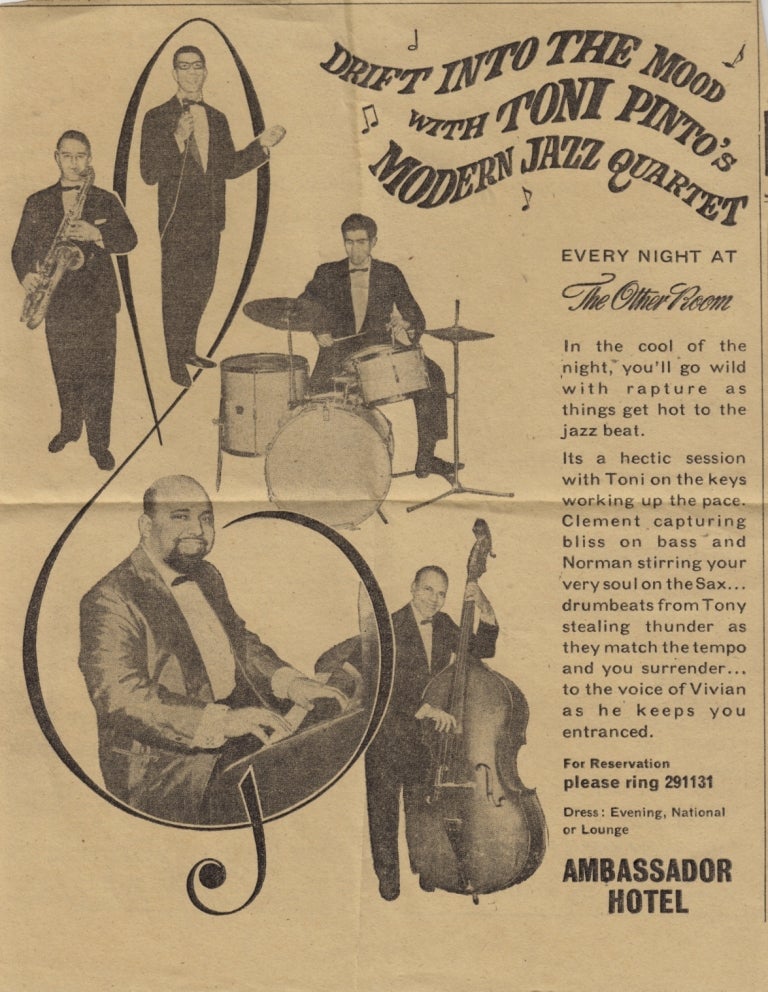
Elsewhere on Churchgate Street, music spilled out through the doors of the Napoli, The Talk of the Town and Gaylord’s. Opposite Venice, there was jazz at the Ritz, while at the Little Hut, Neville Thomas led a group calling itself Three Guys and a Doll. Past Flora Fountain stood Bistro and Volga, home to a quartet led by the grandfatherly baritone saxophonist Hecke Kingdom.
Dave Brubeck was impressed enough by the local musicians to attempt to make some recordings with them during his visit. But Bombay defeated him. He later recounted the episode to an interviewer: “The current fluctuated in Bombay in those days and so the tape would speed up and slow down. Like, when you were shaving, the speed of the motor would go up and down. It ruined one of my favourite tapes I’ve ever made.” Another visiting jazzman, the pianist Hampton Hawes, was overwhelmed by problems that were rather more basic. “Bombay turned me around,” he wrote. “I’d never seen poverty before.” Art, he decided, was irrelevant amidst the gnawing deprivation. “Here I was thinking about making a big splash, a hit record, going home a hero, and I’m walking the streets with motherfuckers who don’t even know what a piece of bread is, let along Stravinsky or Charlie Parker. If Bird was alive and played for them they wouldn’t be able to hear him because they’d be too damn hungry.”
Admittedly, jazz had always been the preserve of Bombay’s elite. But while the audiences were upper crust, the musicians who cooked up the syncopated rhythms were not. Like Toni Pinto, Ronnie Monserrate, Chris and Lorna, the majority were Roman Catholics strivers from the former Portuguese colony of Goa, 550 kilometres south of Bombay. They’d been an important part of the Bombay music scene since the 1920s, when Bombay began to develop its appetite for what was then called “hot music”. Jazz had made its way from New Orleans in the waxy grooves of phonograph records and travelled over the oceans with touring American bands that played for the administrators of the Raj. Bombay’s first jazz concerts were performed at the Bandstand, south of the Oval. Among the earliest jazzmen to play an extended stint in Bombay was Leon Abbey, a violinist from Minnesota, who led an eight-piece band at the Taj during the 1935-’36 season. Abbey wore white tails on stage and played the freshest sounds. He told one interviewer, “I kept up with the latest numbers because someone would always come up to the bandstand and say, ‘Old Bean, would you play so and so…’, because as far as he was concerned, we should know how to playeverything that had ever been written.” Midway through the trip, the Taj management sent Abbey and saxophonist Art Lanier back to New York to pick up the latest music.
Abbey’s outfit was replaced by the Symphonians, fronted by the cornet player Cricket Smith. Smith had been featured on the seminal recordings made by James Reese Europe’s Society Orchestra in 1913 and 1914, capturing jazz at the moment of its transition from the relatively unsophisticated ragtime style. Smith “signed his contract for a fixed amount of money and two Coronas a day, so every day, the manager would have to bring him his cigars”, recalls Luis Moreno, a Spanish trumpet player who lived in Bombay for 20 years. “He was a character.”
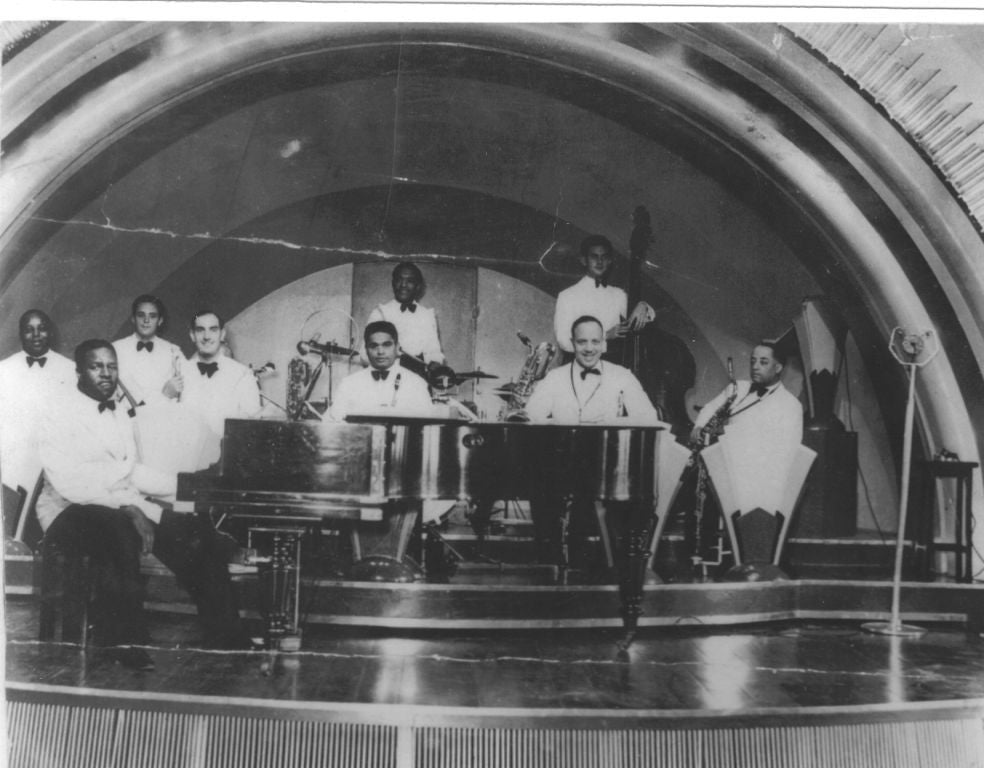
In 1938, pianist Teddy Weatherford, who had played with Louis Armstrong, took the stage with his men. His swinging style and treble voicing had been an important influence on jazz during its formative years. The Taj, it would seem, wasn’t quite the genteel venue it now is—not at least from the way Weatherford’s occasional Russian bassist named ‘Innocent Nick’ described the gigs to the jazz magazineStoryville. “Teddy used to play downstairs, in the Tavern of the Taj, for the soldiers, sailors and others, a very rough place,” Nick said. “Teddy would play for hours without a break. Even with drinks, he would continue one-handed. He had tremendous hands.”
For the African-American musicians, Bombay provided refuge from the apartheid in the U.S. Men like Weatherford and his sidemen, such as the saxophonist Roy Butler, spent long years shuttling between Europe and the subcontinent, where racial barriers seemed non-existent, at least for them. Butler’s years in India as a Weatherford sideman, he told Storyville, were among his happiest—the work was relatively easy, the pay and conditions good, he was treated splendidly by both management and clientele, and enjoyed the luxurious life under the British Raj. The Taj management, on its part, honoured Weatherford by naming a dish after him: Poires Glace Weatherford. (The absence of colour prejudice was only to be expected. After all, industrial baron Jamshetji Tata was moved to build the Taj after being prevented one leisurely Bombay evening from dining at the Europeans-only Pyrke’s Apollo Hotel. Later, he famously hung a notice in the Taj forbidding entry to South Africans and dogs.)
Weatherford’s sidemen were an eclectic lot and opened Bombay’s ears to a wealth of new sounds, the Cuban drumming of Luis Pedroso and the Spanish brass of Luis Moreno, among them. Butler, who was known as the Reverend in acknowledgement of his abstemious ways, helped Weatherford drill the band. Moreno characterised Butler as the “gentleman of the orchestra”. Moreno added, “He never drank in his life and if someone said, ‘How about a round of drink?’ Roy would say, ‘I’ll have an ice-cream. You enjoy beer, I enjoy ice-cream.” Butler went on to lead his own band at Greens, located where the Taj Intercontinental now stands.
Both Weatherford (who married an Anglo-Indian woman, before dying of cholera in Calcutta in 1945, aged 41) and Butler recruited Goan sidemen, plugging Bombay into the source of jazz. The trumpet player Frank Fernand, who played in Weatherford band with his Goan compatriots, Micky Correa and Josique Menzies, says that his stint with the American taught him to “play like a negro”. Moreno helped Fernand develop the ability to hit long, high notes, eventually extending his range up to E flat. Butler, it must be noted, was less than thrilled with his Goan employees. “My short stretch as a bandleader in India was not too earth-shaking,” he told Storyville. “The local musicians were not too familiar with jazz at that time. I understood that there are some very good jazzmen out there now, but the time was too short for anything to develop, good or bad.” For their part, some of the Goan musicians weren’t overly impressed with Butler, either. They believed his decision to stay in India was motivated by the fear that he wouldn’t find work in the US. As Fernand put it, “The faltu fellows stayed, the good ones went home.”
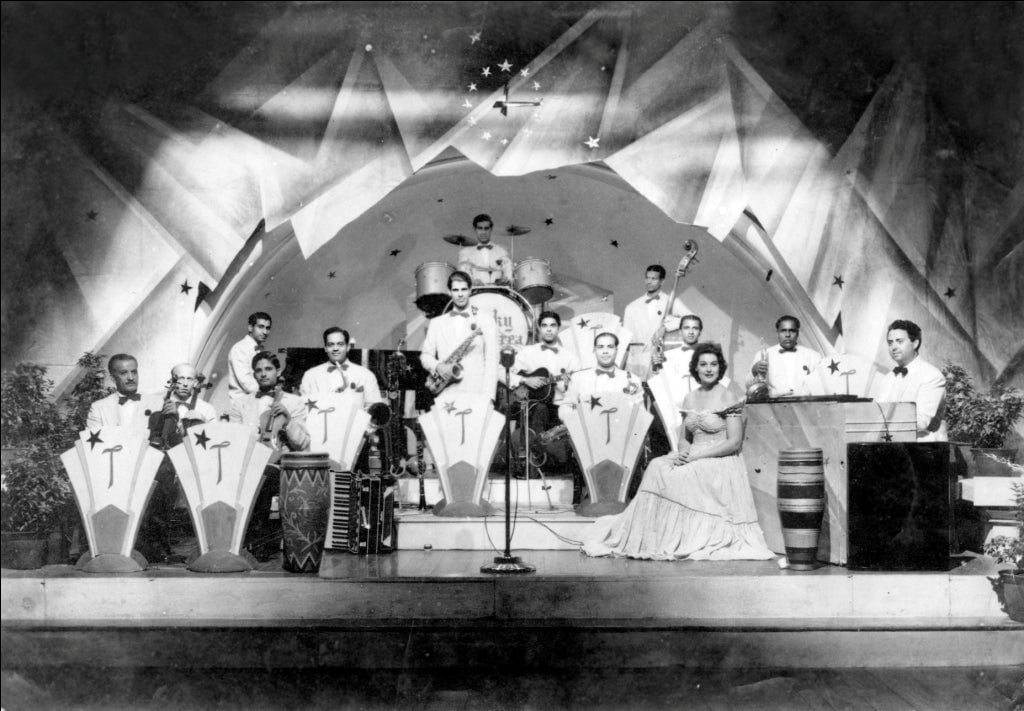
But by the ’40s, Bombay’s swing bands had earned a solid reputation. After listening to Mickey Correa and Frank Fernand play their hearts out the wind section in the outfit fronted by Rudy Cotton (a Parsi who had been born Cawasji Khatau), one contemporary correspondent wrote that “the band really jumped, just another bunch of righteous boys who helped to prove, if proof were needed, that this jazz of ours has developed into an international language”.
* * *
Both Lorna and Chris lived on the edges of a precinct of cemeteries known as Sonapur—the City of Gold. Lorna lives to the south of Sonapur, in Guzder House in the Dhobi Talao neighbourhood. When the wind blows east, her starkly furnished room is filled with the aroma of hot mawa cakes and fluffy buns being unloaded from the ovens in Kayani’s bakery next door. In the narrow corridors of Guzder House, even whispers carry clear down the hallway, and the mundane details of Lorna’s spats with Chris became common knowledge. “He was a big gambler,” one neighbour recalls. “He’d come in a car and say, “Lorna, give me 5,000 rupees.’ She’d go to the bank and withdraw it. All her savings were wiped out.”
Chris lived to the north of Sonapur, opposite the church of Sao Francis Xavier in Dabul. Once he got home, he became a strict but caring father. “He was very religious,” his eldest son Giles told one interviewer. “We had to recite the Rosary at 8 every evening. At 12 noon and at dusk, we had to say the Angelus. If the phone ran during prayers he would say, ‘Throw the phone out.’” Miles, another of Chris Perry’s sons, described his father’s devotion to his art. “His daily routine when he woke up was to first smoke a cigarette and then blow his trumpet. Only then would he go for a wash.” His son Errol added: “He always had his favourite instrument close to him. Even while he slept, the trumpet would be on one side and mummy on the other.”
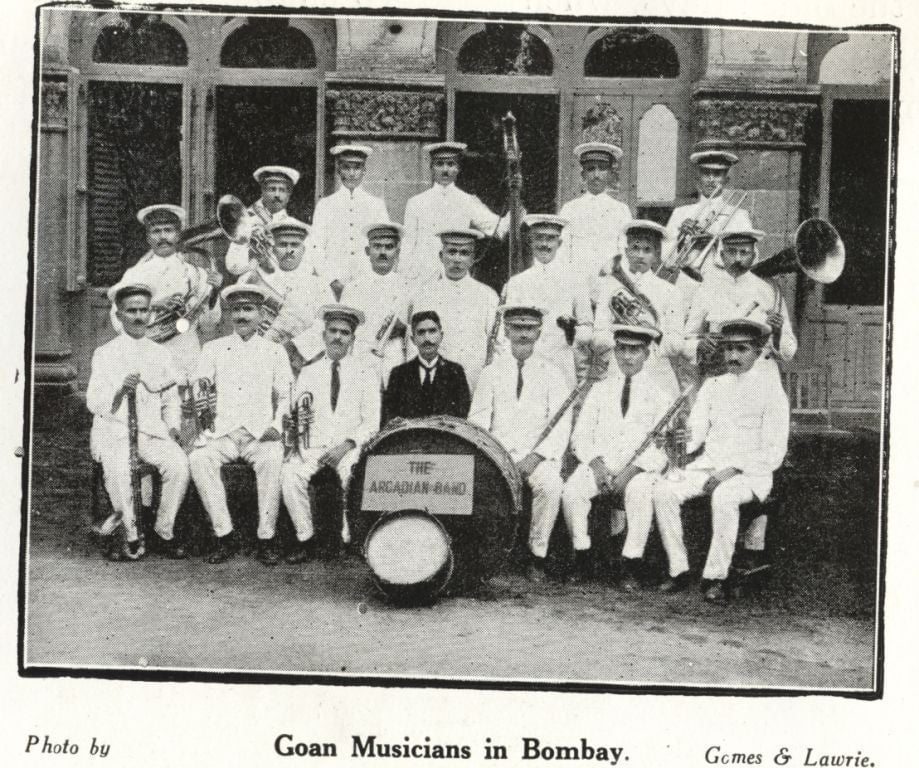
The neighbourhood in which Lorna and Chris lived had long been the focus of Catholic migrants from Goa. The first significant numbers of Goan migrants came to Bombay in 1822, liberal partisans fleeing political persecution in the Portuguese colony for the safety of British India. More followed in 1835 after a rebellion by mixed-race mestizos deposed Goa’s first native-born governor general, Bernardo Peres da Silva. The mestizos launched a two-year reign of terror, forcing da Silva’s supporters into exile. As the century progressed, Goan emigration to Bombay swelled. The Portuguese hadn’t been especially attentive to developing industries, so the pressure on cultivable land was intense. Adding to this, many Goans chafed under the oppression of the bhatkars, as the feudal landlords were known. By the 1920s, many Goan men were being employed as seamen by such British lines as BI, P&O, Anchor and Clan. They used Bombay as a base between their voyages. Other Goans found work as domestic helpers in British households and social institutions. The early Goan fortune-seekers were almost all male: The arduous overland journey from Goa to Bombay, which took between 10 and 15 days, discouraged women. But the opening of the rail line between territories in April 1881 changed that. By the 1930s, Goans in Bombay had come to be associated with the ABC professions: they were ayahs (maids), butlers and cooks. In a column titled Random Jottings published by the Anglo-Lusitanian Journal in 1931, a writer calling himself Atropos noted that of the 37,000 Goans resident in Bombay that year, 14,000 were seamen, 7,000 were cooks or waiters and 3,000 were ayahs. A full 700 were estimated to be musicians. (At least 7,000 Goans were unemployed.)
The neighbourhoods around Sonapur began to fill up with Goan dormitories known as coors, a word that derived from the Portuguese cuadd or room. These were established by individual villages back in Goa to provide a home away from home for their neighbours who were too poor to maintain two residences, one in the village and the other in the city. By 1958, half of the estimated 80,000 Goans in Bombay lived in such quarters—which were now being called “clubs”, adopting the word used to describe the chummeries many firms had established for their single European employees, writes Olga Valladares in her 1958 thesis titledThe Coor System—a study of Goan club life in Bombay. As you walk down the narrow lanes of the neighbourhoods around Sonapur today, you can see fading signboards for them everywhere: the Boa Morte Association (Club of Majorda); St Anne’s Club of Ponda; Fatradicares Club; The Original Grand Club of Pombura; Nossa Senhora dos Milagres, Club of Sangrem. There were 341 Goan clubs in the city in 1958, mainly between Dhobi Talao and Dabul. The seamen who lived in them found it easy from there to get to the docks and the shipping offices, while the cooks and domestics were within walking distance of the produce sellers at Crawford Market, where their chores began before they moved on to their employer’s establishments each day.
Life in the clubs was spartan. Residents were allowed minimal baggage, usually a big trunk. “Life was lived out of the box and on it,” Valladares says. The club-dweller’s box “is not only the repository of all personal possessions, his wardrobe and his safe, but it is his dining table at mealtimes and his bed at night.” The altar was the centrepiece of the club. In addition to statues of Christ and Mary, they contained icons of the patron saint of the village, decorated with offerings of flowers. Every evening, members were required to gather around the altar to say the Rosary. The highlight of the year was the celebration in exile of the village feast. Collections were taken up and, after Mass, there was an elaborate meal, followed by musical performances.
The music, old-timers recall, was superb. After all, the musical talents of Goans had earned the community a formidable reputation throughout the subcontinent. The Portuguese may have neglected higher education in Goa, but the parochial schools first established in 1545 put into place a solid system of musical training. As early as 1665, a Goan choir performed an oratorio by Giacome Carissimi in seven voices at the Basilica of Bom Jesu. The recital caused such a sensation, it led the Carmelite musician Guiseppe di Santa Maria to declare, “I feel I am in Rome.” The clash of civilisations in Goa created a whole range of syncretic forms: the Goa sausage was a Portuguese chorizo with a tear-inducing splash of Indian spice; cashew feni was drunk in a leisurely Iberian manner after sundown; and the mando—the only harmonised folk musical form on the subcontinent—melded saudade, the nostalgic melancholy that pervades Portuguese fado, with Indian folk melodies. Transgressing subcontinental norms, the mando was the accompaniment for social dancing between the sexes; as the musicians crooned their songs of yearning, couples struck up delicate postures of stylised courtship.
Their musical inclination came in handy when Goans sought work in British India. They soon established themselves as the musicians of the Raj, staffing the orchestras established by British administrators and by Indian maharajahs seeking to appear sophisticated. In Bombay, Goan musicians took over both ends of the music business. In 1888, The Times of India mentions a Goan ensemble playing in the Bombay Philharmonic Orchestra in the Town Hall. Other Goan groups are said to have displaced the Muslim street bands that played at the weddings of the common folk and other festive occasions. Salvador Pinto, who played coronet in the Volunteer Corps, is thought to have formed the first proper street band, writes Bombay local historian Dr Teresa Albuquerque. She says that the demand for Goan musicians was so great, one ingenious man named Francisco Menezes trawled through the clubs to find unemployed men to march in the processions, instructing them to inflate their cheeks without blowing a note. Dhobi Talao’s Goans were prominent not only as musicians but also in the city’s musical instrument trade. L M Furtado opened his store in Jer Mahal, around the corner from where Lorna lives, in the 1920s, importing pianos and violins that had been tropicalised to keep them from warping in the Bombay swelter. Marques and Company was nearby.
Goan musicians also conjured up soundscapes for the silent films. Bombay’s Watson’s Hotel had been host to India’s first cinema screening on July 7, 1896, a show that advertised itself as “living photographic pictures in life-sized reproductions by Messrs Lumiere Brothers”. By New Year’s day in 1900, the Tivoli Theatre was screening 25 pictures, with music by a string band. A portrait photographer named Harishchandra Sakharam Bhatavdekar became the first Indian to import a motion-picture camera from London and he shot a wrestling match between two well-known musclemen in 1897. Other locally shot films followed, including Alibaba, Hariraj and Buddha by a Bengali named Hiralal Sen. A creative flashback projects the tantalising image of Bombay audiences drinking in black-and-white scenes from Indian folktales as a Goan string quartet trots out phrases from Mozart and snatches of mandos, varying the tempo to match the action on screen. Goans have stayed in the picture ever since.
When jazz swung into the subcontinent, Goans seized it as the song of their souls. “Jazz gave us freedom of expression,” explains Frank Fernand, who played in the Teddy Weatherford band at the Taj. “You played jazz the way you feel—morning you play differently, evening you play differently.” New tunes came to India as sheet music, but that sometimes wasn’t much help even to accomplished readers: jazz contained such unconventional instructions as glissando, mute and attack. “But when we heard the records, we knew how to play the notes,” Frank says. For a Goan jazzman, the greatest accolade was to be told that he “played like a negro.” No one seems to have received more praise on this account than Chic Chocolate, who occasionally led a two-trumpet barrage at the Green’s Hotel with Chris Perry. Chic—whose name Goans pronounced as if they were talking about a rooster’s offspring—was known as the “Louis Armstrong of India.” His stratospheric trumpet notes and his growly scatting were a tribute to his New Orleans idol. “He had a negro personality,” Frank Fernand marvels. “He played everything by heart.” His stage presence was unforgettable. As the band reached a crescendo, Chic would fall on one knee and raise his horn to the stars.
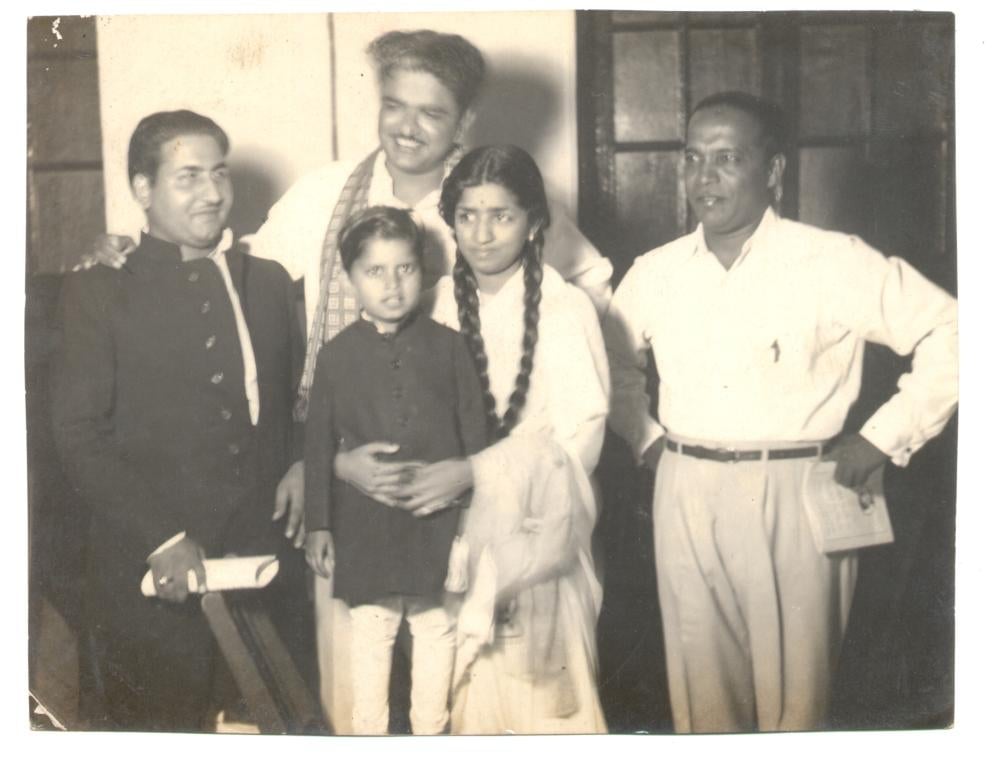
Chic had been born Antonio Xavier Vaz in Aldona in 1916. His mother wanted him to be a mechanic and earn a respectable living, but he dreamt of a life in music. He started out with a group called the Spotlights and, by 1945, his own outfit, Chic and the Music Makers, beat out 12 other bands to win a contract at Green’s, which also was owned by the Taj. The pianist Johnny Fernandes, who later married Chic’s daughter, Ursula, remembers the stir the trumpet player caused when he played at parties in Dhobi Talao homes. He says, “People would flock to see him as if he was a (movie) hero.” To have Chic perform at a wedding or a christening was a matter of prestige, but it could bump up the catering expenses. “You’d have hordes of gatecrashers coming to hear him,” Johnny explains. Chic, his contemporaries say, not only played like a negro, he even looked like one.
The swarthiness of some Goan jazz musicians, such as the saxophonist Joe Pereira, came from ancestors with roots in Portugal’s African colonies of Mozambique and Angola. But Chic’s dark skin is attributed by one musician to his being a Mahar, a member of an untouchable caste. Many of Bombay’s jazzmen, this musician says, were drawn from this caste. As he theorised: “In Goa, Mahars were grave diggers. They’d also play snare drums and blow conches in funeral bands. When they came to Bombay, they became good jazz drummers and trumpet players.”
They say Chic performed one of his greatest feats of improvisation offstage. “Chic lived in Marine Lines and had a girlfriend called Catherine, with whom he had a son,” a matter that shocked conservative Catholic sensibilities, one musician recalls. “But then he decided to marry another girl. The wedding was to be the Wodehouse Road Cathederal in Colaba. But Catherine landed up there with her son, so the wedding was shifted hastily to Gloria Church in Byculla”, across town. The befuddled guests waited patiently in the Colaba church, even as Chic said “I do” in the deserted neo-Gothic nave of Gloria church.
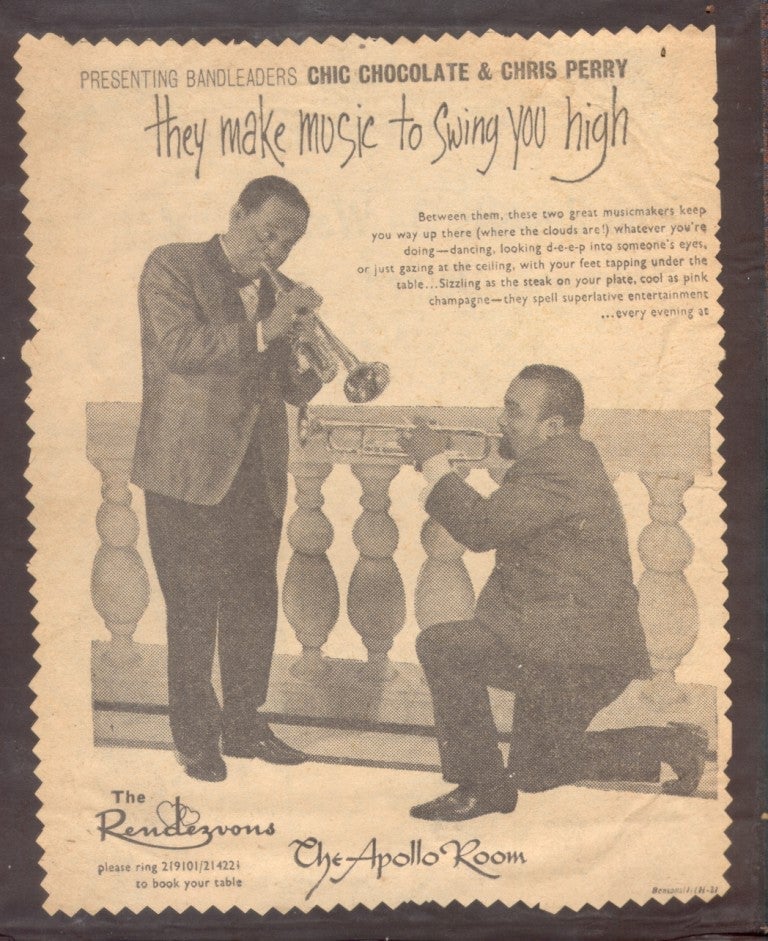
Many early Goan jazzmen were sideman in Micky Correa’s band, which played at the Taj from 1939 to 1961. Among them was Ronnie Monserrate’s father, Peter, who was known as the “Harry James of India”. Peter’s five sons formed Bombay’s second-generation of Goan jazzmen: Joe and Bosco play trumpet and fluegelhorn, Blasco the trombone, Rex the drums and Ronnie the piano. The family lived in Abu Mansion, an apartment block in the textile mill district of Parel. The boys would come home from school at four and begin to practice, each having been allotted a two-hour slot by their father. The music would continue late into the night, then occasionally start again in the wee hours when Peter Monserrate and his gang—violinist Joe Menezes, trombone player Anibal Castro, drummer Leslie Godinho and Chic Chocolate—returned from a drink after work to demand an impromptu performance. As their mother cooked up a meal, the Monserrate boys would go through their paces. Their neighbours, mainly working-class Hindus, tolerated this with fortitude. Ronnie surmises, “I suppose it’s like living next to the railway tracks. After a while, you get immune to the roar of the trains if you want to get any sleep.”
Activity in the Monserrate household would get especially hectic just before the biennale Sound of Surprise talent shows that the Bombay Musicians’ Association organised on the Sunday in November closest to the feast of St Cecilia, the patron saint of musicians. Bombay’s hottest swing bands took to the Birla theatre’s revolving stage to compete for the Franz Marques award for best original composition. Even though Peter Monserrate rehearsed his band hard in the corridors of Abu Mansion, his group never managed to win the trophy. His friend, Chris Perry, won in 1964, the first year it was given out. Toni Pinto took the award home in 1966 for Forever True, a gentle bossa nova tune that leapt out at him late one night as he travelled home in a cab. With only the bulb above the meter for light, he scribbled the theme down on the back of a matchbox.
Goan musicians who didn’t play the nightclubs mainly worked at weddings, Parsi navjote initiation ceremonies and Catholic funerals. For many, finding a job for the evening meant taking a trip to Alfred’s, the Irani restaurant on Princess Street, midway between Chris’s home and Lorna’s apartment. Tony Cyril, Dennis Vaz, Johnny Rodriges, Johnny Baptista, Mike Machado and Chris Perry—the major bandleaders each had a regular table at which they’d slurp up endless cups of milky chai. “You’d come there every morning and hang around there as a routine,” says Johnny Fernandes, Chic Chocolate’s son-in-law. People who wanted to liven up their parties would land up at Alfred’s and approach one or the other leader. The cry would go up: one bass player needed. Two trumpets and one piano. “Once you got your assignment, you’d go home to get suit and head out to the venue,” Johnny says. It paid to be sharply turned out: in addition to their 15 rupee fee, musicians got three extra rupees for dressing up in a white jacket and black trousers.
* * *
When Bollywood films are beamed through their melodramatic prism of stock characters and broad stereotypes, Catholics emerge as not being quite Indian. They speak a mangled Hindi patois with Anglicised accents. They’re dolled up in Western clothes. The men are given to wearing climatically inappropriate jackets and felt hats. Unlike Hindus who knock back the occasional glass of something in bars, Catholic men tipple at home, as their wives and children look on. Still, they’re genial drunks, unthreatening sidekicks to the hero. Often, their role as sideman was literal: The screen musicians backing the hero as he performs that nightclub sequence that seemed mandatory in every Hindi film shot in the ’50s answer to names like George and Sidney and Michael. As for Catholic women, they never wear saris and their immodest legs show out from under their frocks. Older Catholic women, often called Mrs Sequeira or Mrs D’Souza, are landladies or kindly neighbours offer the hero consolation when he is temporarily stymied in his pursuit of the loved one. But younger Catholic women (with notable exceptions) are danger incarnate. They smoke. They have boyfriends to whom their parents don’t object. They dance in nightclubs and lure men to their doom with their promise of a world in which the sexes interact more freely, in which arranged marriages aren’t the norm, in which love isn’t taboo. In the end, though, the Catholic characters have only minor roles, a reflection of their lives at the margins of Indian society.
The bit parts in which Catholics found themselves cast on screen weren’t an accurate portrayal of the vital role Goans played the Hindi film industry. Until the ’80s, India had no pop music save for Hindi film songs. Millions memorised and hummed the compositions of C Ramachandra, Shankar and Jaikishan, Laxmikant and Pyrelal and S D Burman, whose names rolled by in large letters at the beginning of the movies. But the Sound of India actually was created by Goan musicians, men whose names flickered by in small type under the designation “arranger.” It’s clear. The Hindi film classics that resound across the subcontinent and in Indian homes around the world wouldn’t have been made without Goans. Their dominance of the Hindi film world is partly a function of the structural differences between Indian and Western music. Indian classical music is melodic. The ragas that form the basis of Indian music are unilinear, each instrument or vocalist exploring an independent line. To move an audience, film scores must be performed by orchestras, with massed instruments playing in harmony. Only Goans, with their training in Western music, knew how to produce what was required.
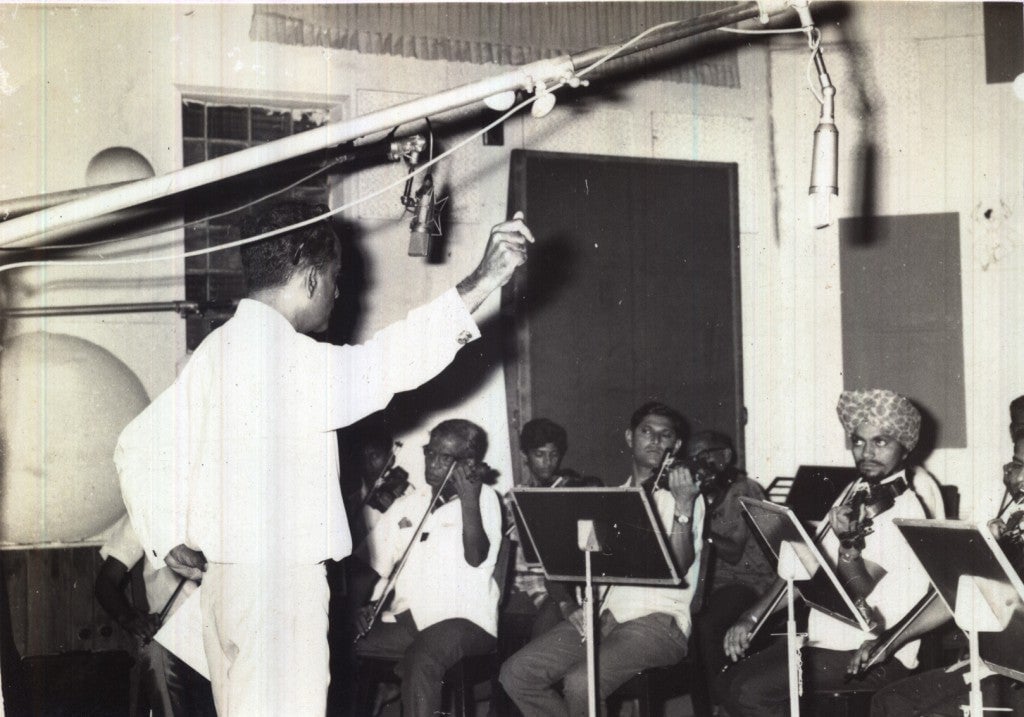
Frank Fernand was among the first Goans in Bollywood and assisted such worthies as Anil Biswas, Hemant Kumar and Kishore Kumar. As he describes it, the men who composed the scores for Hindi films couldn’t write music and had no idea of the potential of the orchestras they employed. They would come to the studio and sing a melody to their Goan amanuensis, or pick out the line on a harmonium. The Goan assistant would write it out on sheet paper, then add parts for the banks of strings, the horn sections, the piano and the percussion. But the assistant wasn’t merely taking dictation: It was his job to craft the introductions and bridges between verse and chorus. Drawing from their bicultural heritage and their experience in the jazz bands, the Goans gave Bollywood music its promiscuous charm, slipping in slivers of Dixieland stomp, Portuguese fados, Ellingtonesque doodles, cha cha cha, Mozart and Bach themes. Then they would rehearse the orchestras, which were staffed almost entirely by Goans. After all, hardly anyone else knew how to play these Western instruments. To Frank Fernand, the music directors were mere subcontractors, men whose main job was liaising with the financiers. “We arrangers did all the real work. They’d show off to the directors and producers and try to show that they were indispensable. But to be a music director, salesmanship was more important than musicianship.”
Chic Chocolate spent his mornings assisting C Ramachandra, who is popularly credited with having introduced swing into Bollwood. But tunes like Ina Mina Dika and Gori Gori (inspired by the mambo standard Tico Tico) bear Chic’s unmistakable signature. His stamp is also audible on the throbbing Cuban percussion opening of Shola Jo Bhadke, a tune from Albela. Chic and the Music Makers made a brief appearance in the film to perform the tune, clad in an Indian wardrobe director’s frilly Latinesque fantasy. Cawas Lord’s conga beats out the introduction and hands clap clave. Chic smiles broadly at the camera in the best Satchmo tradition.
Among the most reputed arrangers in Bollywood was the venerable Sebastian D’Souza, who did his best-known work with the duo of Shankar and Jaikishan between 1952 and 1975. “His arrangements were so brilliant, composers would take snatches of his background scores and work them into entire tunes,” says Merlin D’Souza, Sebastian’s daughter-in-law and a rising Bollywood music assistant herself. Sebastian had a brush with the film world in pre-Partition Lahore, where he led a band at Stiffle’s hotel. His earliest arrangements were for Lollywood composers Shyam Sundar and Mohammed Ali, recalls the saxophonist Joe Pereira. Joe was Sebastian’s cousin, and had been adopted as a 14-year-old by his older relative. Joe would spend his mornings taking music lessons from Sebastian, then take him his tiffin in the afternoon when Sebastian took a break from rehearsals. After 1947, Sebastian made his way to Bombay, but found that there was a glut of bandleaders in the hotels. He called on his Lollywood contacts and made his way to the film recording studios, where he got a break with O P Nayyar. The first tune he arranged was Pritam aan milo, which was sung by C H Atma in 1955. Merlin, who occasionally accompanied her father-in-law to the studios, remembers him walking around with a pencil tucked behind his ear. He devised a system of notation that incorporated the microtones that characterised Indian melodies. Sebastian was highly regarded by his musicians for his ever-generous nature. He often lent musicians money to buy better instruments or tide over a crisis. His contemporaries also remember him for the patience he showed even less-than-dexterous musicians. Merlin says that Sebastian was willing to give anyone a break. “Even if you played the viola haltingly, you’d find a place there, on the back row,” she says.
That proved the lifeline for many Goan musicians, who, by the mid-70s, increasingly were being thrown out of work as Bombay’s nightclub scene went into decay. A more rigorous enforcement of the prohibition act and a crippling tax on establishments featuring live music kept patrons away. Besides, rock and roll was changing musical tastes and Bombay was developing the ear for beat groups. The film studio, which until then had been a source of supplementary income, suddenly became everyone’s main job. But the relatively simply Hindi film music Goan musicians were forced to play ate them away. “Their passion was to play jazz and big band,” Ronnie Monserrate says. “This was their bread and butter but they didn’t enjoy it. They were really frustrated. That’s probably why so many of them became alcoholics.” It took only four or five hours to record each tune. Musicians would be paid at the end of each shift, so they’d grab their money and head out for a drink. Few actually cared to see the movies in which they’d performed.
Chris Perry also had a stint in the film studios, assisting Khayyam and working with such names as Lakshmikant and Pyarelal, R D Burman and Kalyanji Anandji. He eventually was emboldened to produce his own film. Bhuiarntlo Munis (The Man from the Caves) was the first colour film to be made in Konkani,the language spoken along the west coast between southern Maharashtra and northern Karnataka, and which is the mother tongue of most Goans. Chris wrote the story, the music and the lyrics. It starred Ivo Almedia, Helen Pereira and C Alvares, who had gained prominence for their work in tiatr, as Goa’s satirical musical theatre is known. The film was based on The Count of Monte Cristo, a tale that has great resonance in Goa because one of the characters, Abbe Faria, who in the Dumas novel is described as an Italian priest, in real life had been born in Candolim, in Goa, in 1756. Father Jose Custodio de Faria is acknowledged as having been among the earliest protagonists of scientific hypnotism, and a statue of him stands prominently in Goa’s capital, Panjim. The priest, who moved to Lisbon, was forced to flee to France in 1787 when a rebellion he had been associated with in Goa was crushed. The Conjuracao dos Pintos, the conspiracy of the Pinto family, was the first Asian struggle that aimed to replace European colonial rule with an independent state on the European model. That’s how Dumas came to meet the man he knew as “the black Portuguese.”Abbe Faria threw himself into the vortex of the French Revolution, was imprisoned and died of a stroke in 1819. In the Dumas novel, Abbe Faria takes it upon himself to educate the hero, Dantes, when the two are unjustly imprisoned in the French version of Alcatraz for 14 years. Dantes escapes, transforms himself into the Count of Monte Cristo and destroys his enemies. When the novel was published in 1844, it earned the Vatican’s ire because the tale was seen to propagate the un-Christian impulse of revenge. But as the trumpeter Frank Fernand points out, it seemed like an entirely appropriate subject for Chris Perry, the man whose quick temper was the stuff of popular lore.
* * *
[protected-iframe id=”a20823ee3ddc06a4a2047eb582bf1359-39587363-66199670″ info=”https://w.soundcloud.com/player/?visual=true&url=http%3A%2F%2Fapi.soundcloud.com%2Ftracks%2F18273260&show_artwork=true&secret_token=s-g8OMz” width=”100%” height=”100″ scrolling=”no”]
One April evening in 1966, the Goan pop musician Remo Fernandes, barely a teenager then, strolled down to Panjim’s Miramar beach to take the air on the esplanade. All Panjim society, high and low, was there too. “There, decked up in our over-flared bell bottoms, we checked out the chicks dolled up in what we all thought were mini skirts—after all they did reach a full quarter of an inch above the knee,” Remo recalls. Keeping an eye on the younger folk, clumps of parents sat on the green wooden benches on the esplanade, “running a commentary on whose son had gone off with whose daughter for a walk along the sea”.
From a kiosk on the beach, a pretty lady named Bertinha played records on the speaker system provided by the Panjim Municipality. She had a weakness for Cliff Richard tunes, Remo says. But that evening, she spun out a song called Bebdo (Drunkard). Miramar Beach was hypnotised. “The Panjim citizenry stopped in its tracks, the sunken sun popped up for another peep, the waves froze in mid-air,” Remo has written. “What manner of music was this, as hep as hep can be, hitting you with the kick of a mule on steroids? What manner of voice was this, pouncing at you with the feline power of a jungle lioness? And—hold it—no, it couldn’t be—yes, it was—no—was it really? Was this amazing song in Konkani?”
Bebdo had been recorded a few months earlier by Chris Perry and Lorna in a Bombay studio and released by HMV. The jacket bore the flirty image that would later hang outside the Venice nightclub. The 45 rpm record had four tracks, opening with the rock-and-rolling Bebdo and ending on the flip side with the dreamy ballad, Sopon. “Sophisticated, westernised urban Goa underwent a slow-motion surge of inexplicable emotions: the disbelief, the wonder, the appreciation, and then finally a rising, soaring and bubbling feeling of pride,” Remo says. “The pride of being Goan. The pride of having a son of the soil produce such music. Of having a daughter of the soil sing it thus. And, most of all, of hearing the language of the soil take its rightful place in popular music after a period of drought. Chris and Lorna had come to stay.”
It isn’t as if there hadn’t been Konkani records before. HMV released its first Konkani tunes in 1927. The earliest records had been made by Anthony Toloo, Joe Luis, L. Borges, Kid Boxer and Miguel Rod, all of them cantarists from the tiatr world. But by the ’60s, Konkani song had grown creaky and old fashioned. The melodies often were copied from western songs and the lyrics, for the most, were banal. Konkani songs, he says “were predictable to a fault—you could whistle the next line and anticipate the next chord change on the very first hearing. Add to that a few wrong notes from two inevitable trumpets and modest recording quality.”
Chris Perry’s tunes shattered the mould. They married the sophistication of swing with the earthiness of the Goan folk song. “The songs were sensuous, funny, sexy, sad, sentimental, foot-tapping,” Remo raves. “His songs are peopled by unforgettable fictional characters whom we have come to picture as real-life acquaintances—Bebdo, Pisso (Madman) and Red Rose are as palpable as personages created by a skilled novelist or cartoonist. He has taken us on unforgettable journeys to Lisboa and Calangute, ” the Goan beach that was being colonised by hippies around the time Chris was making his landmark recordings. Some of the tunes had been written for the two tiatr shows Perry had produced: Nouro Mhozo Deunchar (My Husband, the Devil) and Tum ani Hanv (You and Me). Nouro Mhozo Deunchar was Goa’s introduction to Lorna and the 28 performances were an unqualified success. The crowds were so large, people waited outside the performance tent to hear her voice, one correspondent writes. After the shows, people would surge backstage to shake Lorna’s hand. One tune she sang, Saud (Peace), became a standard at Goan weddings, and is still sung before the toast is raised.
Chris Perry’s heart may have been in Goa, but it was Bombay that made it possible for him to record his classics. His albums crystalised the nostalgia of Bombay’s Goan community, giving voice to their rootlessness—and his. Bombay allowed him to soak in jazz and rock and roll, sounds from which he crafted his own template. Besides, his Bombay nightclub stints help him assemble the tight-knit band that accompanied him to the studio—where his Bollywood experience came in very handy. “His recording work meant that, unlike the tiatr people, he knew his way around the studio,” notes Ronnie Monserrate. “He knew about placing microphones to get the best sound and about mixing.”
Most of all, there was Lorna. Her rich, sassy voice, everyone’s agreed, is what alchemised Chris’s compositions. Their long years together gave him an acute sense of her potential and he composed especially for her. “Her nightingale’s voice created the magic in rendering the songs effectively,” insists Tomazinho Cardoz, the tiatrist who went on to become the speaker of Goa’s legislative assembly. Remo, among others, has no doubts about this. “Without Chris there would have been no Lorna, and without Lorna there would have been no Chris,” he has written.
* * *
Lorna stopped performing in 1973 after her relationship with Chris Perry fell apart. The stories about their break up are hazy on the details. In one version, Lorna came home from a vacation to find that the apartment they shared had a new lock on the door. Chris’s wife, Lily, is said to have served him an ultimatum and he went home to Dabul. But before the split, he’d made Lorna sign a bond on stamp paper, prohibiting her for 20 years from singing with any other band leader without his permission. He is said to have reasoned that Lorna was his creation, so she had no right to perform without him. Chris is said to enforced the bond in a muscular fashion. “Once, Emiliano got her to sing with him when he was performing at the Flamingo. Chris landed up there, chased him all the way down Marine Drive and gave him a black eye,” one musician says. “Imagine doing that to Emiliano. He’s such a harmless bugger.”
Another musician told of how Chris would leap out of his seat at Alfred’s restaurant when he saw Lorna go by on her way to the bazaar. She would squirm out of his clutches, but was terrified enough to refuse all offers to perform again.
Chris eventually moved to Dubai with his family in the mid-’70s, and opened the Dubai Music School. The split is said to have left Lorna a wreck. People who know her say she became an alcoholic. She worked as a secretary in a firm that sold earth moving equipment for a while, but disappeared from the world of show business. Every afternoon, though, Goa radio would broadcast the tunes she and Chris had recorded and two decades after she’d made her last record, every Goan still knew Lorna’s voice. Rumours boiled over: She’s emigrated. To Canada. To Australia. No, she’s dead.
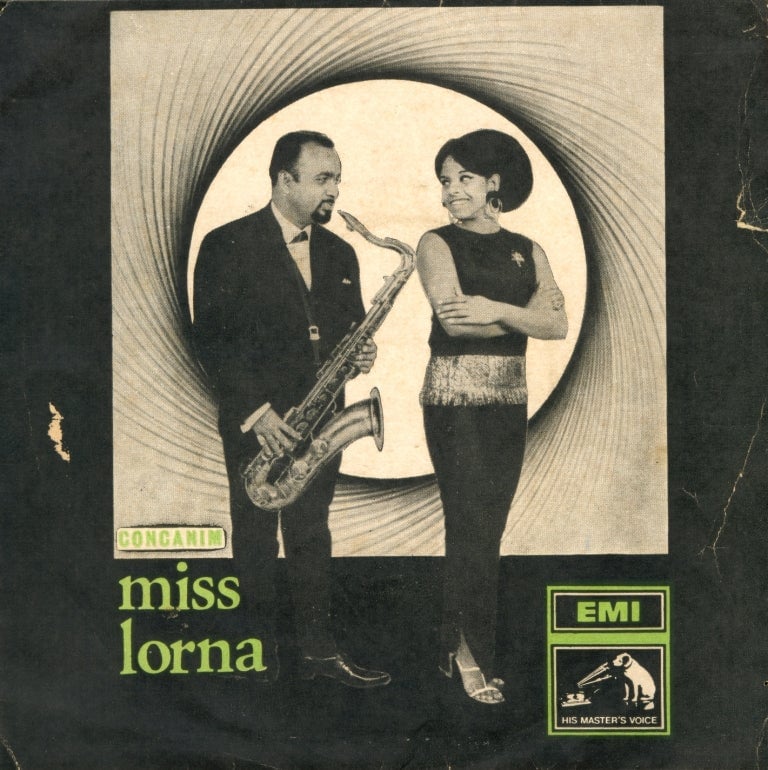
Goans were still discussing Lorna’s whereabouts a quarter of a century after Ronnie Monserrate first backed her at the Venice. Now a successful record producer and hot film studio sideman with his brothers, Ronnie kept receiving inquiries about Lorna when he toured Goa in 1994 to promote a new album. He decided to take a trip to Guzder House to persuade her to record again.
A woman fresh from the shower with her hair in towel opened the door. She sat him down and asked what he wanted. “I want to see Lorna,” he explained. She replied, “That’s me.” Ronnie was taken aback. “She looked like a wreck. I remembered her as she was in 1971—a total bombshell. But since then, she had hit the bottle and become total gone-case.”
It took a while to convince Lorna that he was serious about getting her into the studio again. She told Ronnie that it had been a couple of decades since she’d last performed. “She was trying to tell me tangentially that anyone who’d tried to get her to sing had got a pasting from Chris Perry,” Ronnie says. But after another visit, Ronnie managed to recruit her mother to his cause and win Lorna over. They began rehearsing in February 1995, knocking the rust off her voice. “The old power was still there,” Ronnie says. “I began to feel good about the project.” Ronnie also made a trip to HMV’s vaults to dig out the infamous contract. The company’s lawyer assured him that it wasn’t legally binding. Back in Goa, Ronnie had recruited Gabriel Gomes to write tunes for the album. “It had been Gabru’s dream to have Lorna sing his songs,” Ronnie says. Gabriel set to work in a frenzy of cigarettes, building into such a peak that, after composing just one track, he took ill and had to be taken to hospital. He died shortly thereafter. New composers had to be brought in.
When the recording of Hello Lorna finally got underway in a Juhu studio five months later, Ronnie would travel back across town with her after each session. She was still afraid that Chris Perry would accost her.
On December 3, 1996, Lorna performed publicly for the first time in 24 years at a tourism festival at Miramar beach. The traffic was snarled up for kilometres as Goans swarmed to catch a glimpse of the legend. State police say that the show drew 300,000 people—the biggest crowd since the one that had gathered to celebrate Goa’s liberation from Portuguese rule in 1961. At a press conference the day before, Lorna had been mobbed. “There was mayhem,” Ronnie recalls. “People ran unto stage and were hugging her and kissing her. They were so overjoyed that Lorna was back.” Chris Perry landed up at Lorna’s hotel in a last-minute attempt to scare her off. She wasn’t in, so he left a note. Ronnie intercepted the missive and didn’t pass it on.
A few hours later, cheers erupted as Lorna climbed to the stage, looking out over a choppy ocean of heads. When the hubbub subsided, Ronnie’s aching piano introduction washed over the audience and Lorna began to belt out the opening tune from her comeback album. “Aicat mozo tavo,” she urged. “Avaz mozo tumchea canar sadonc ishtani ravo portun aicunc mozo tavo.” Hear my voice. Let the sound linger in your ears, my friend. Hear my voice.
[protected-iframe id=”188652d742de6eacb3d5260222b9bd57-39587363-66199670″ info=”https://w.soundcloud.com/player/?visual=true&url=http%3A%2F%2Fapi.soundcloud.com%2Ftracks%2F18273153&show_artwork=true&secret_token=s-TasXz” width=”100%” height=”100″ scrolling=”no”]
This post first appeared on www.tajmahalfoxtrot.com.